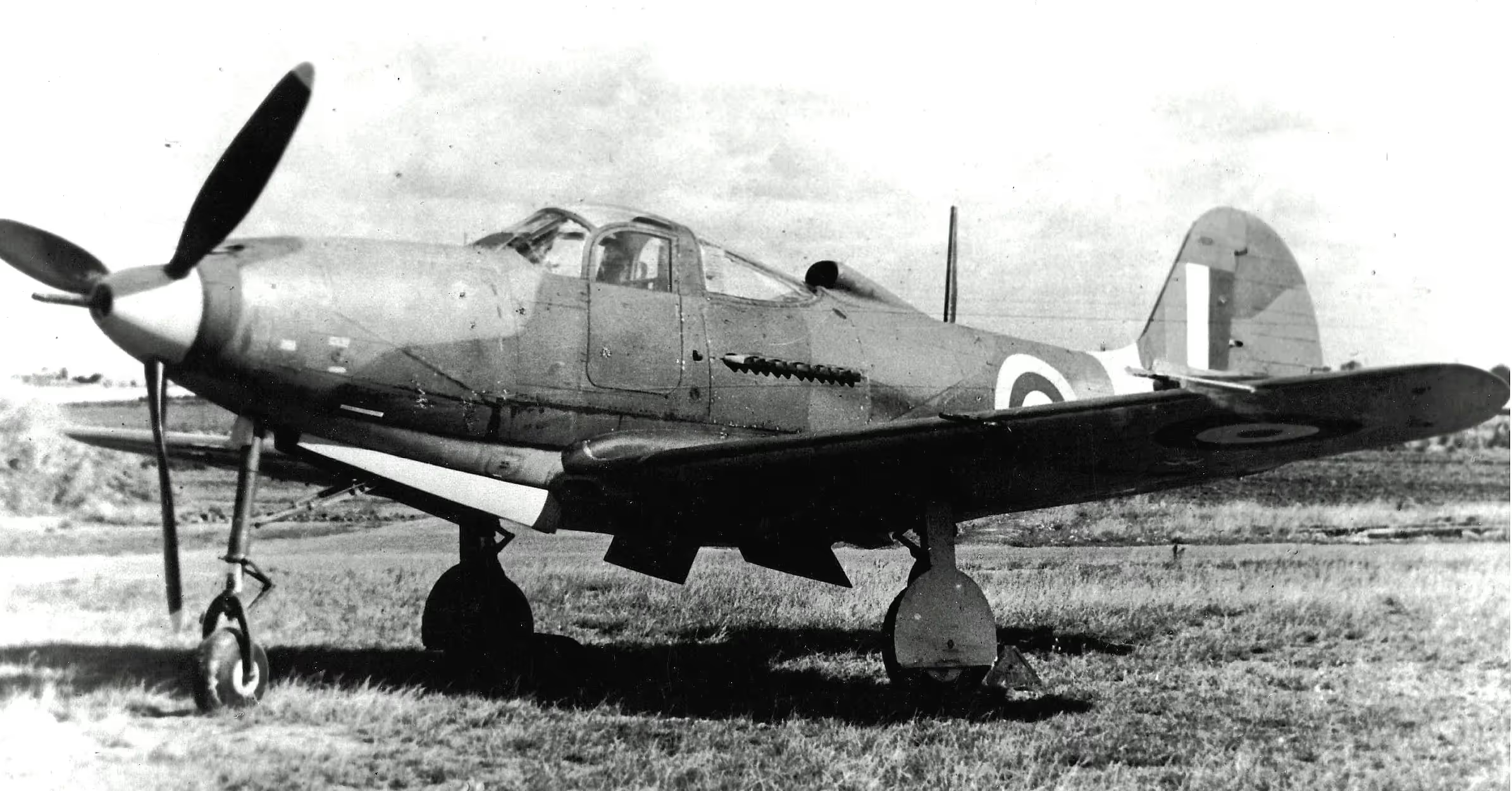Canadian Warplanes 3: Bell P-39 Airacobra
Bell P-39 Airacobra

(RAF Photo)
Bell P-39 Airacobra, No. 601 Squadron, RAF, ca 1941. None on the RCAF establishment, but a few were flown by RCAF aircrews overseas during the Second World War.
The Bell P-39 Airacobra was a fighter produced by Bell Aircraft for the U.S. Army Air Forces during World War II. It was one of the principal American fighters in service when the United States entered combat. The P-39 was used by the Soviet Air Force, and enabled individual Soviet pilots to collect the highest number of kills attributed to any U.S. fighter type flown by any air force in any conflict. Other major users of the type included the Free French, the Royal Air Force, and the Italian Co-Belligerent Air Force.
It had an unusual layout, with the engine installed in the center fuselage, behind the pilot, and driving a tractor propeller in the nose with a long shaft. It was also the first fighter fitted with a tricycle undercarriage. Although its mid-engine placement was innovative, the P-39 design was handicapped by the absence of an efficient turbo-supercharger, preventing it from performing high-altitude work. For this reason it was rejected by the RAF for use over western Europe but adopted by the USSR.
The British export models were renamed "Airacobra" in 1941. A further 150 were specified for delivery under Lend-Lease in 1941 but these were not supplied. The Royal Air Force (RAF) took delivery in mid-1941 and found that performance of the non-turbo-supercharged production aircraft differed markedly from what they were expecting.[44] In some areas, the Airacobra was inferior to existing aircraft such as the Hawker Hurricane and Supermarine Spitfire and its performance at altitude suffered drastically. Tests by the Royal Aircraft Establishment at Boscombe Down showed the Airacobra reached 355 mph (571 km/h) at 13,000 ft (4,000 m).[45] The cockpit layout was criticized, and it was noted that the pilot would have difficulty in bailing out in an emergency because the cockpit roof could not be jettisoned. The lack of a clear vision panel on the windscreen assembly meant that in the event of heavy rain the pilot's forward view would be obliterated; the pilot's notes advised that in this case the door windows would have to be lowered and the speed reduced to 150 mph (240 km/h)[46] On the other hand, it was considered effective for low level fighter and ground attack work. Problems with gun- and exhaust-flash suppression and the compass could be fixed. (Wikipedia)

(RAF Photo)
Bell P-39 Airacobra (Serial No. DS173).
A Bell P-39 Airacobra (Serial No. AH621), equivalent to USAAF P-39D, was operated by RCAF Test and Development Establishment from RCAF Station Rockcliffe, Ontario. It unfortunately made a gear up landing near the Gatineau Hills, Quebec on 21 Nov 1941, and was written off on 26 Nov 1941.

(RAF Photo)
Bell P-39 Airacobra, No. 601 Squadron, RAF, ca 1941.

(RAF Photo)
Bell P-39 Airacobra, No. 601 Squadron, RAF, ca 1941.

(RAF Photo)
Bell P-39 Airacobra, No. 601 Squadron, RAF, c1941.

(USAAF Photo)
Experimental V-tail P-39.





